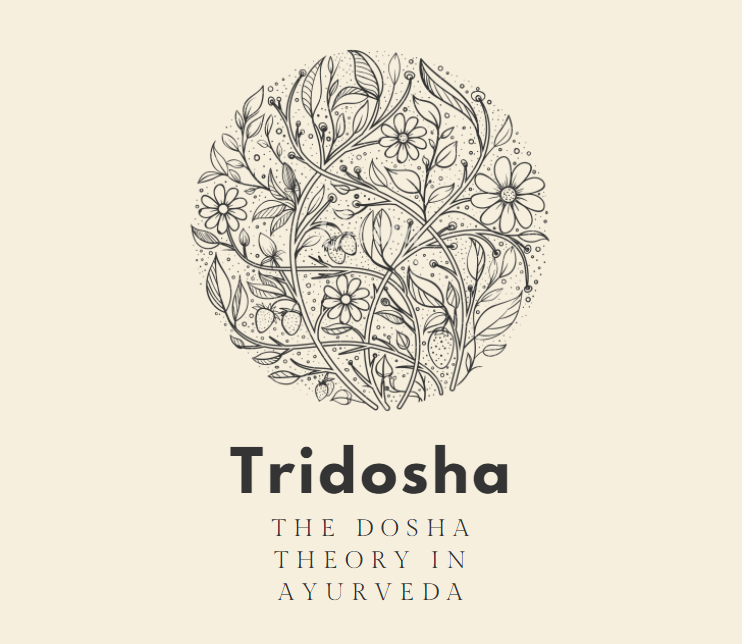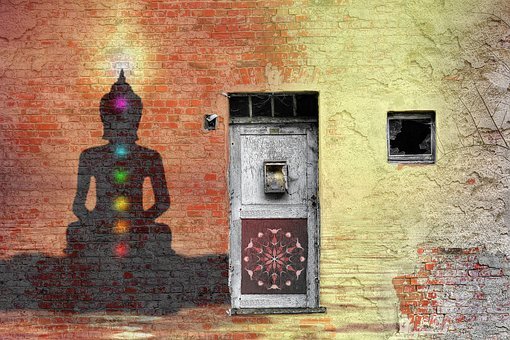In this blog series, let’s explore the three dosha in the body – vata, pitta, and kapha, also called tridosha or the three dosha. Tridosha is one of the most fundamental concepts of Ayurveda. It is as basic to Ayurveda as is the concept of addition to mathematics!
The Dosha Theory in Ayurveda

Normally people know about the tridosha – vata pitta and kapha. However, the existence of dosha actually starts with the mental plane and descends to the physical terrain. The dosha on the mental level are – raja (hyperactivity) and tama (inactivity). Satva guna is the balanced and healthy state of mind.
No dosha or maligning factor exists on the spiritual level
Ayurveda is the first ancient science to propose the psycho-somatic aspect of health and disorders. There are three primary dimensions of human existence – spiritual, mental and physical.
What is Dosha?
The word dosha means the one that maligns or soils. Dosha are the forces that run the body’s metabolism. But, the end result of dosha on the body is destruction or misalignment. This is the reason why these metabolic patterns are called “dosha”
Imbalanced (dosha) destroy the body and balanced (dosha) sustain the body.
Let’s try to understand it through some examples.
विकृताविकृता देहं ध्नन्ति ते वर्तयन्ति च।
(Ashtang Hridya 1/7)
- Hard work is great, however, workaholism can destroy relationships, health, and sometimes an entire life.
- Love is great, but what if it becomes an obsession! Wonder if you have read the book “the butterfly garden”!
- Let us take the example of a bicycle. There is a fine line between a state of balance and imbalance while riding a bicycle. In a balanced state, the bicycle runs smoothly, whereas even a slight imbalance can lead to a crash.
“ati sarvatra varjayet” (extreme of anything is dangerous / should be avoided) is an ancient adage that signifies the importance of balance.
The bottom line is that these metabolic forces are the basis of our physiology. But when they become too much or too little, then they cause disease. And they have a natural tendency to go astray.
These forces are the only source of wear and tear in the body. But without them, there will be no life. For example, smoke and waste are a natural part of a burning fire, however, there can be no fire without a little smoke or ash. Dosha come with a necessary evil of imbalance.
Let’s take the example of the cooking process
Cooking causes natural wear and tear in the utensils. Doshas symbolize the same.

When this wear and tear becomes unsustainable, the aging process sets in. With this aging, the destructive effect of these forces become unsustainable for the weakening body, and the result is death.
Ayurveda aims to tame the dosha and keep them from triggering an early aging process for as long as possible. In this manner, Dosha symbolizes the catabolic forces in the body. On the other hand, we have 7 dhatu.
The word dhatu signifies – the one that sustains. Dhatu are the anabolic stations that contain and balance the dosha action. In light of the above examples, Dhatus are akin to the wood that sustains the fire, or the utensil that bears the brunt of the cooking process. However, doshas are more known than the Ayurvedic anabolic factor – dhatu.
Ayurveda Body Types – How Tridosha Dosha Form in the Body
According to Ayurvedic genesis, the world starts with a thought, just like the matrix! (Matrix trilogy). So, it indicates that whatever we see is a projection!!!

Srushti krama (Ayurvedic Genesis)
- Everything starts with the consciousness, the soul or the life force.
- This life force forms a separate entity with the help of ego (ahankara).
- Ego gives rise to intellect or buddhi and
- buddhi creates the mind (man).
- From the mind emerge the 5 types of sensations or gyanendriya.
These sensations give rise to their fields or subjects, for example, the sensation of sight gives birth to light!
And after a long series of such developments, the human body forms as a thought matrix, according to the quality of the soul; just like a soft prototype of the final product.
In this process, the doshas are formed from the panchmahabhuta or the five great elements. And all this happens even before a fetus is formed. Therefore, the dosha prakrati of an unborn person is decided before the fetus formation. The final dosha combination then starts the fetus formation. Now, let’s see how the Tridosha (3 doshas) emerge from the five great elements!
Tridosha (Ayurvedic Body Type I) – Vata Dosha
Vata dosha forms as a result of the combination of two primary elements – akash(space) and vayu(air). That’s logical! Because akash provides the action ground and vayu is pure kinetic energy. Vata dosha contains the qualities of both the space and air elements.
- That’s why; vata dosha is responsible for all kinds of activity in the body; right from a beck of a finger to fast running!
- Vata dosha has a very strong influence on the nervous, muscular, and hormonal systems in the body.
Triosha (Ayurvedic Body Type II) – Pitta Dosha
Pitta dosha emerges from the fire element. It inherits the warmth, brightness, and ability to transform from the fire. Therefore, pitta is responsible for all kinds of chemical reactions and heat-related transformations in the body.
- It is the primary dosha that dominates the digestive system.
- Pitta dosha is responsible for all kinds of pigmentations present in the body. The skin tone directly reflects the status of pitta dosha in the body.
- It controls the chemical transformations that enable vision.
Tridosha (Ayurvedic Body Type III) – Kapha Dosha
Jal (the water element) and prithvi (the earth element) come together to form Kapha dosha. Therefore, kapha dosha is the basis of all physical formations. It is the foundation on which subtle forces like vata and pitta act. Kapha dosha inherits the coolness and solidity of its parent elements.
- Kapha is the mother dosha, primarily responsible for tissue formation in the body. Therefore, it is the dominant dosha in growing children.
- It forms the protective mucosal lining and fluids throughout the body, for example, the protective fluids around the brain, the heart, and the lungs (cerebrospinal, pericardial, and pleural lining).
- It is responsible for sleep, tissue repair, and rejuvenation as well.
The Pseudoscience of 3 Ayurvedic Dosha or Tridosha
Many people contest the dosha theory based on a lack of dosha visibility. However, all the Ayurvedic texts state that dosha are invisible but they are known by their effect on the body. Ayurveda argues that a verifiable proof of existence is as good as directly visible proof.
For example, –
- We cannot see the air, but we can experience its existence through wind or a cyclone.
- Ultraviolet or infrared waves are not visible, but they can produce a profound effect on the human body.
- No one has seen electricity or electrons, even through an electron microscope. But their existence is verifiable through the effect that they produce.
The bottom line is that – there is a huge range of natural phenomena that we are not able to see. But they all exist and function seamlessly, without our knowledge. Tridosha might be one of many such phenomena.
Besides, the tridosha theory resonates with the natural biorhythm of the body. It can produce surprisingly accurate diagnostic results, and profoundly effective treatment options in case of chronic, lifestyle-related, and autoimmune disorders.
Therefore, let’s not accept blindly, but also not reject blindly a theory that has successfully survived for thousands of years!

2 comments
[…] to Ayurveda, there are three types of people. Likewise, there are types of foods that sustain these people. They are satvik […]
[…] of us know about the physical prakrati that emerges from physical dosha (vata, pitta, and kapha). But prakriti has a psychosomatic […]
Comments are closed.